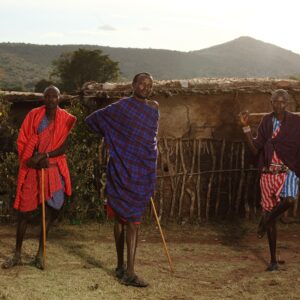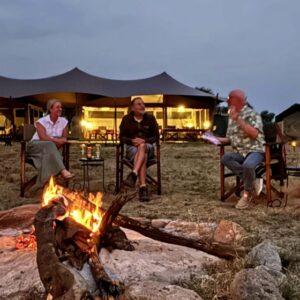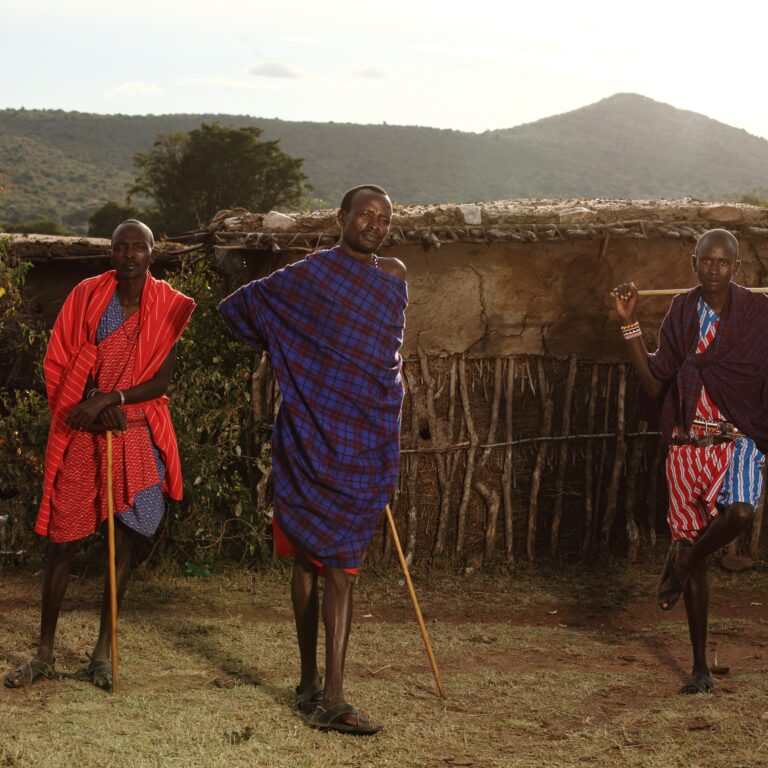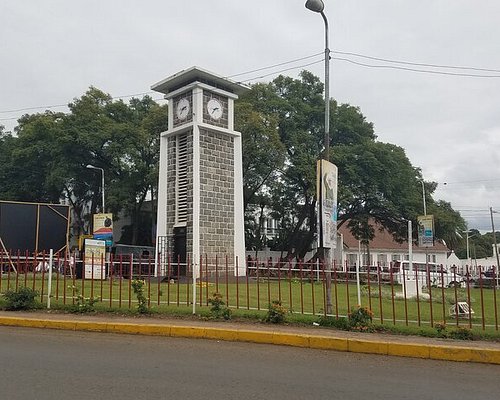Mount Kilimanjaro. The very name resonates with adventure, a snow-capped sentinel rising majestically from the plains of Tanzania. Africa’s highest peak, and the world’s tallest freestanding mountain. For countless adventurers, it represents the ultimate personal challenge. A test of physical endurance, mental fortitude, and sheer willpower. But as with any monumental undertaking, the question inevitably arises: Is climbing Kilimanjaro truly worth it?
This isn’t a simple yes or no answer. The “worth” of such an endeavor is deeply personal, weighed against the significant investment of time, money, and effort. However, by exploring the unparalleled rewards and the undeniable challenges, we can gain a clearer perspective on what makes this iconic ascent a life-changing experience for so many. For those who brave its slopes, Kilimanjaro offers far more than just a summit; it’s a journey into breathtaking natural beauty, a unique ecological exploration, a chance for profound cultural immersion, an undeniable triumph of the human spirit, and an unparalleled opportunity for deep connection.
1. Breathtaking Natural Beauty: A Visual Symphony
From its base to its summit, Kilimanjaro offers a continuously evolving canvas of natural beauty that few other places on Earth can rival. The mountain is a geological masterpiece, and your ascent takes you through a visual symphony of landscapes that shift dramatically with every thousand meters of elevation gained.
The journey begins in the vibrant rainforest zone, a lush, emerald world where dense canopies filter the sunlight, creating an ethereal glow. Giant ferns, towering trees draped in moss, and the unseen calls of exotic birds and monkeys transport you to a primeval realm. The air is thick with humidity and the scent of damp earth, providing a refreshing start to the arduous climb.
As you ascend, the forest gives way to the more open heath and moorland zone. Here, the air thins, and the views begin to open up dramatically. The landscape is characterized by unique giant heather plants and bizarre, prehistoric-looking lobelia and senecio plants that dot the rolling hills. This transition offers sweeping vistas of the plains below, often shrouded in a morning mist that slowly burns away to reveal endless horizons. The changing light casts long shadows, creating a photographer’s dream.
Higher still, you enter the stark, almost alien alpine desert zone. This is a land of volcanic rock and dust, where vegetation becomes sparse. Replaced by hardy grasses and lichens clinging to the barren ground. It’s a desolate yet strikingly beautiful moonscape, with towering rock formations and a sense of profound solitude. The air is crisp, and the sun, though powerful, provides little warmth.
Finally, the summit push takes you into the Arctic zone. This high-altitude realm is dominated by glaciers, ice fields, and frozen scree. The biting cold and the thin air are constant companions, but the reward is the breathtaking panorama of the vast African continent unfolding below, often stretching to the horizon with the curvature of the Earth visible. The immense glaciers clinging to the summit. Remnants of a bygone era, provide a stark and powerful contrast to the sun-drenched plains below. Each day on Kilimanjaro is a new visual narrative, a continuous unfolding of natural wonders that keeps the senses engaged and the spirit uplifted, even amidst the physical demands.
2. A Window into Diverse Ecosystems: A World in Miniature
Kilimanjaro is often described as a “world in miniature” because climbing it is akin to traveling from the equator to the Arctic in a matter of days. This vertical journey allows for an extraordinary glimpse into distinct ecological zones, each with its own unique flora and fauna.
Cultivation Zone (800m – 1,800m). While not part of the trek itself, this is the fertile lower slopes where local communities farm coffee, bananas, and other crops, showcasing human interaction with the mountain’s bounty.
Rainforest Zone (1,800m – 2,800m). This dense, humid forest is home to various monkey species (blue monkeys, black-and-white colobus monkeys), diverse birdlife, and a rich undergrowth. The air is often cool and misty, vital for the region’s water supply.
Heath and Moorland Zone (2,800m – 4,000m). As the moisture decreases, the vegetation changes dramatically. Giant heathers and unique, giant senecio plants (related to sunflowers but evolved to cope with high-altitude conditions) dominate. This zone showcases incredible adaptation to the cooler, drier environment.
Alpine Desert Zone (4,000m – 5,000m). A truly arid zone with minimal vegetation. Life here is sparse, but resilient, consisting primarily of lichens, mosses, and hardy grasses that can withstand the extreme temperature fluctuations.
Arctic Summit Zone (5,000m – 5,895m). The highest zone, characterized by permafrost, rock, ice, and permanent glaciers. Despite the harsh conditions, some hardy lichens and insects can still be found.
This rapid transition through such diverse ecosystems provides a unique educational experience. Highlighting the delicate balance of nature and the incredible adaptability of life to varying altitudes and climates. It offers a profound appreciation for the interconnectedness of these natural systems.
3. An Opportunity for Cultural Immersion: Beyond the Summit
While Kilimanjaro is primarily a trekking adventure, it also offers a genuine opportunity for cultural immersion. Largely through interaction with your dedicated support team. The guides, porters, and cooks who accompany you are predominantly local Tanzanians, often from the Chagga tribe native to the Kilimanjaro region, or from other nearby communities. They are the backbone of your expedition, tirelessly carrying gear, preparing meals, and ensuring your safety.
“Pole Pole”. You’ll quickly learn the Swahili mantra “pole pole” (slowly, slowly), which becomes the rhythm of the climb and a metaphor for life. This philosophy of patience and steady progress is deeply ingrained in the local culture.
Warmth and Resilience. Witnessing the incredible strength, resilience, and unwavering good humor of the porters is often one of the most impactful parts of the climb. Despite the demanding work, they often sing, share stories, and offer encouragement.
Shared Meals and Conversations. In the dining tent, you’ll share meals and conversations with your guides and cooks, learning about their lives, families, and perspectives. This human connection adds a profound dimension to the wilderness experience.
Economic Impact. By choosing a reputable and ethical tour operator, your climb directly contributes to the local economy, providing vital employment and income for these communities. Many operators also support local schools, healthcare, or conservation projects, allowing your adventure to have a tangible positive impact.
This cultural exchange, often subtle but deeply felt, transforms the climb from a mere physical challenge into a rich, human experience that fosters mutual respect and understanding.
4. The Triumph of Reaching the Roof of Africa: A Life-Altering Achievement
Reaching Uhuru Peak, the summit of Kilimanjaro, is the ultimate goal for most climbers, and the sense of triumph is often an emotional, overwhelming crescendo. After days of trekking, battling altitude, cold, exhaustion, and self-doubt, standing on Africa’s highest point is an unparalleled feeling of accomplishment.
The summit night is typically the hardest part of the climb, beginning in the dark hours before dawn, often in sub-zero temperatures and severely thin air. It’s a relentless, slow, upward slog where every step feels like a monumental effort. But as the sun begins to paint the sky with vibrant colors, illuminating the glaciers and the plains below, a surge of renewed energy and purpose often takes over.
Upon reaching Uhuru Peak, the emotions are raw and powerful: tears of joy, hugs of congratulation, and an immense feeling of pride. You’ve pushed your physical and mental limits further than you ever thought possible. This success instills a profound sense of confidence and resilience that extends far beyond the mountain itself. Many climbers report that the lessons learned about perseverance, patience, and pushing through discomfort on Kilimanjaro empower them to tackle challenges in their everyday lives with renewed vigor and belief in their own capabilities.
5. A Unique Bonding Experience: Friendships Forged in Fire
The shared challenge of climbing Kilimanjaro creates incredibly strong bonds. Not only with your fellow trekkers but especially with your support team.
Team Spirit. You are part of a team, and everyone on the mountain, from your guide to the last porter, plays a vital role in your success. You share meals, jokes, stories, and the quiet moments of reflection.
Vulnerability and Support. In an environment where personal comfort is minimal and the stakes are high (your health and success). People tend to drop their pretenses. You see each other at your most vulnerable, and you support each other through the toughest moments. This shared adversity often forges deep, lasting friendships.
The “Kilimanjaro Family”. Many climbers speak of their “Kilimanjaro family” – the group of individuals they climbed with. Forever connected by the shared experience and mutual support. The camaraderie and teamwork are often as rewarding as the summit itself.
Is Climbing Kilimanjaro Worth It? FAQs
What are the main benefits of climbing Kilimanjaro? The main benefits include experiencing breathtaking natural beauty through diverse ecosystems. Achieving an unparalleled sense of personal triumph, gaining unique cultural immersion with your support team, forming deep bonds with fellow climbers, and learning valuable lessons in perseverance and self-discovery.
How difficult is climbing Kilimanjaro? Is it suitable for beginners? Kilimanjaro is a challenging trek, not a technical climb, meaning no special climbing equipment is required. However, it is physically demanding, primarily due to the high altitude. It is suitable for beginners with a good level of physical fitness, proper training, and a strong mental attitude. Choosing a longer route (7-8 days) significantly improves acclimatization and success rates.
What are the biggest challenges on Kilimanjaro? The biggest challenge is Acute Mountain Sickness (AMS), which can range from mild headaches and nausea to more severe, life-threatening conditions. Other challenges include extreme cold, physical exhaustion (especially on summit night), basic camp conditions, and potential lack of sleep.
How much does it cost to climb Kilimanjaro? The cost varies significantly based on the route, duration, and operator. A reputable operator typically charges $2,000 – $5,000+ USD per person for the trek itself, covering permits, guides, porters, food, and accommodation on the mountain. This does not include international flights, visas, vaccinations, personal gear, or tips for the crew, which can add substantial amounts.
Is it safe to climb Kilimanjaro? With a reputable operator, climbing Kilimanjaro is generally safe. Ethical operators prioritize safety with experienced guides, daily health checks, emergency oxygen, and clear evacuation procedures. However, inherent risks associated with high-altitude trekking always exist.
What’s the best time to climb Kilimanjaro? The best times are generally during the warmer, drier months: January to early March and June to October. These periods offer clearer skies and better visibility, though mountain weather is always unpredictable.
Do I need special gear for Kilimanjaro? Yes, you need specialized gear. This includes well-broken-in hiking boots, multiple layers of warm clothing (including thermal base layers, fleece, and a down jacket), waterproof outer shells, a warm sleeping bag (rated -15°C / 0°F or colder), a headlamp, and a daypack. Reputable operators provide detailed packing lists.
Will I see a lot of wildlife on the climb? Kilimanjaro is not a safari destination for large game. You’ll see diverse plant life and perhaps some monkeys, birds, or smaller antelopes in the lower zones. The focus of the climb is the mountain’s natural beauty and the trekking experience itself.
How important are the porters and guides? Incredibly important. Your guides are crucial for your safety and success, monitoring your health and navigating the route. Porters carry the vast majority of your gear, making the climb possible for trekkers. Their dedication and hard work are foundational to the Kilimanjaro experience. Tipping them is customary and expected.
Conclusion: A Summit of Self-Discovery
So, is climbing Kilimanjaro worth it? For those who embark on the journey prepared and with an open mind, the answer is a resounding yes. It’s not a luxury holiday, nor is it merely a physical challenge. It is a profound immersion into breathtaking natural beauty. A test of spirit that redefines personal limits, and an opportunity for deep human connection.








